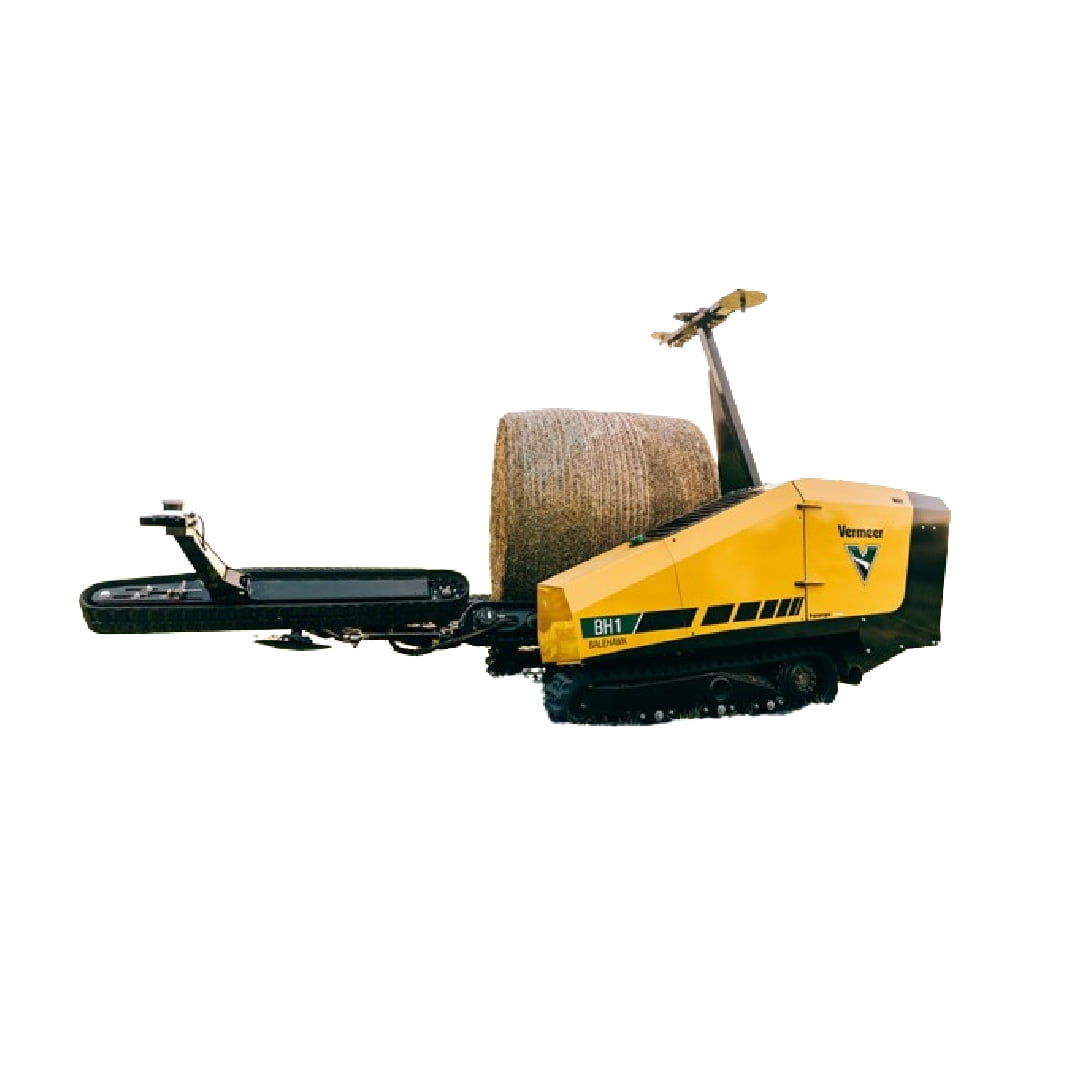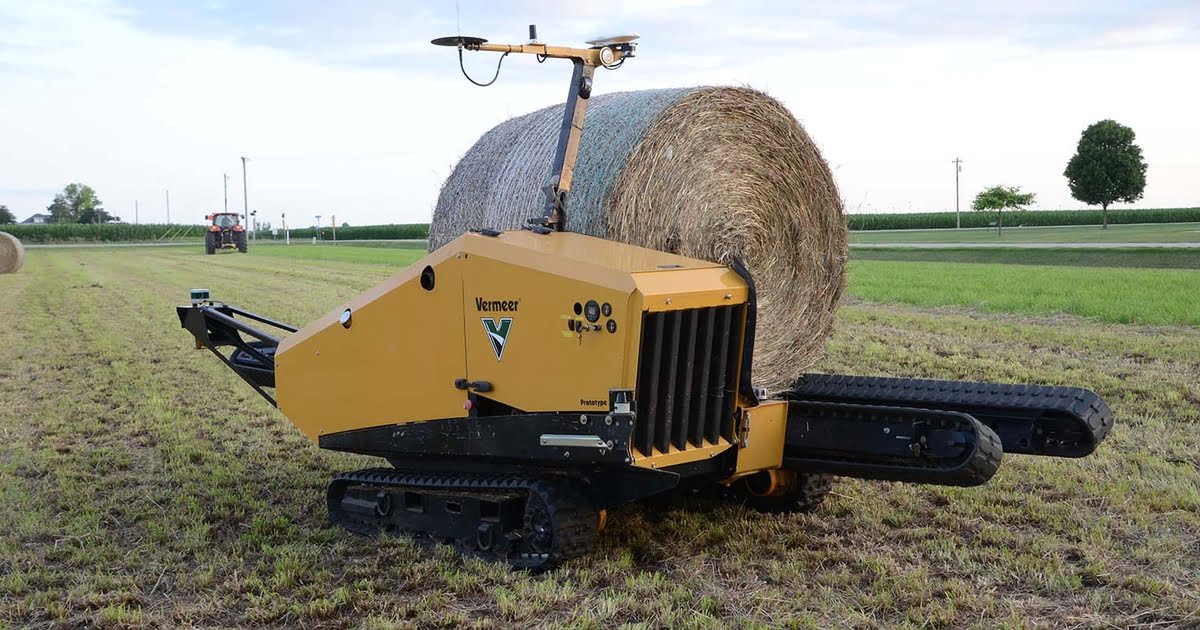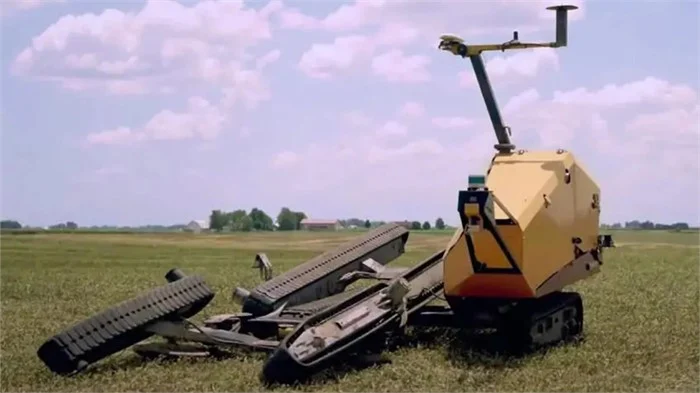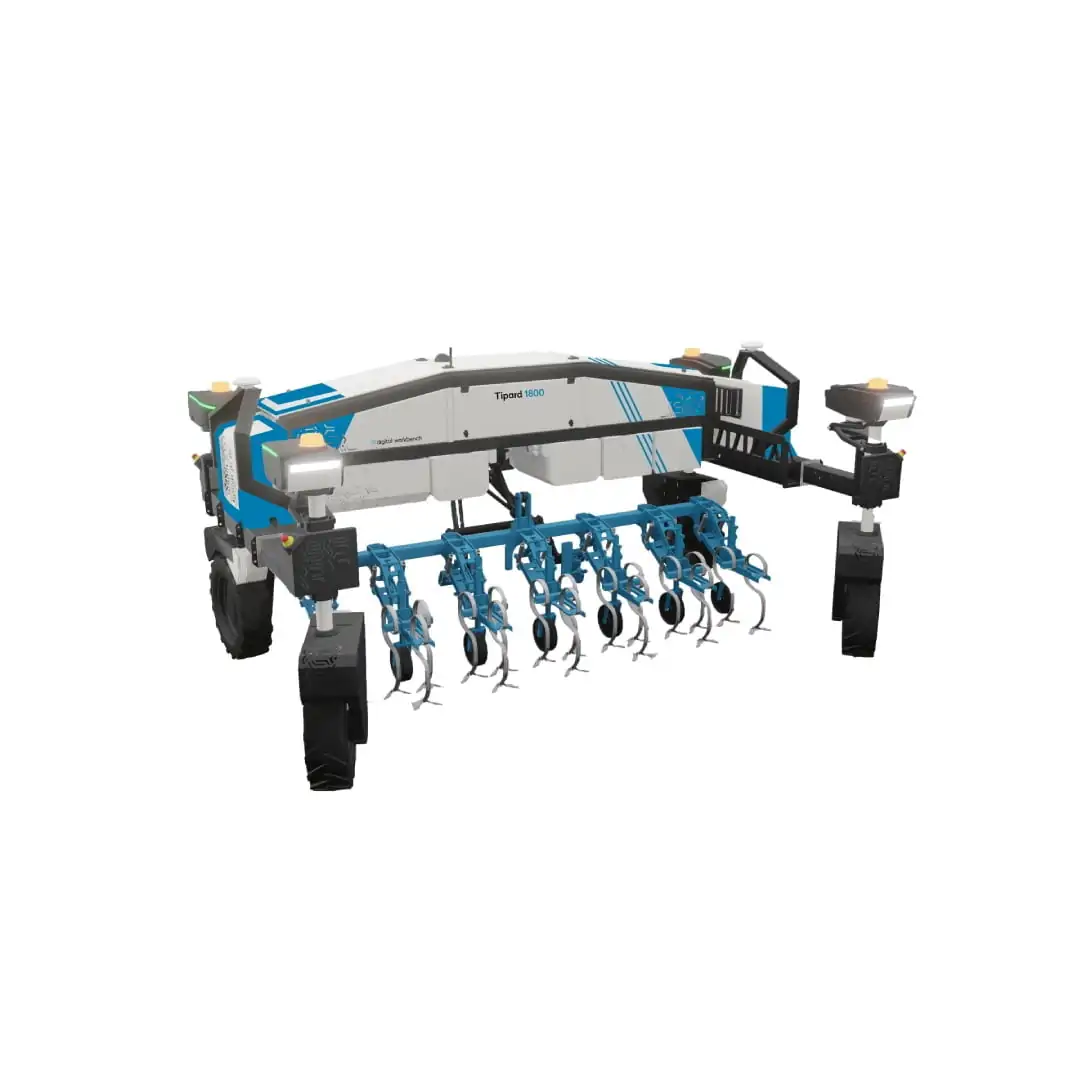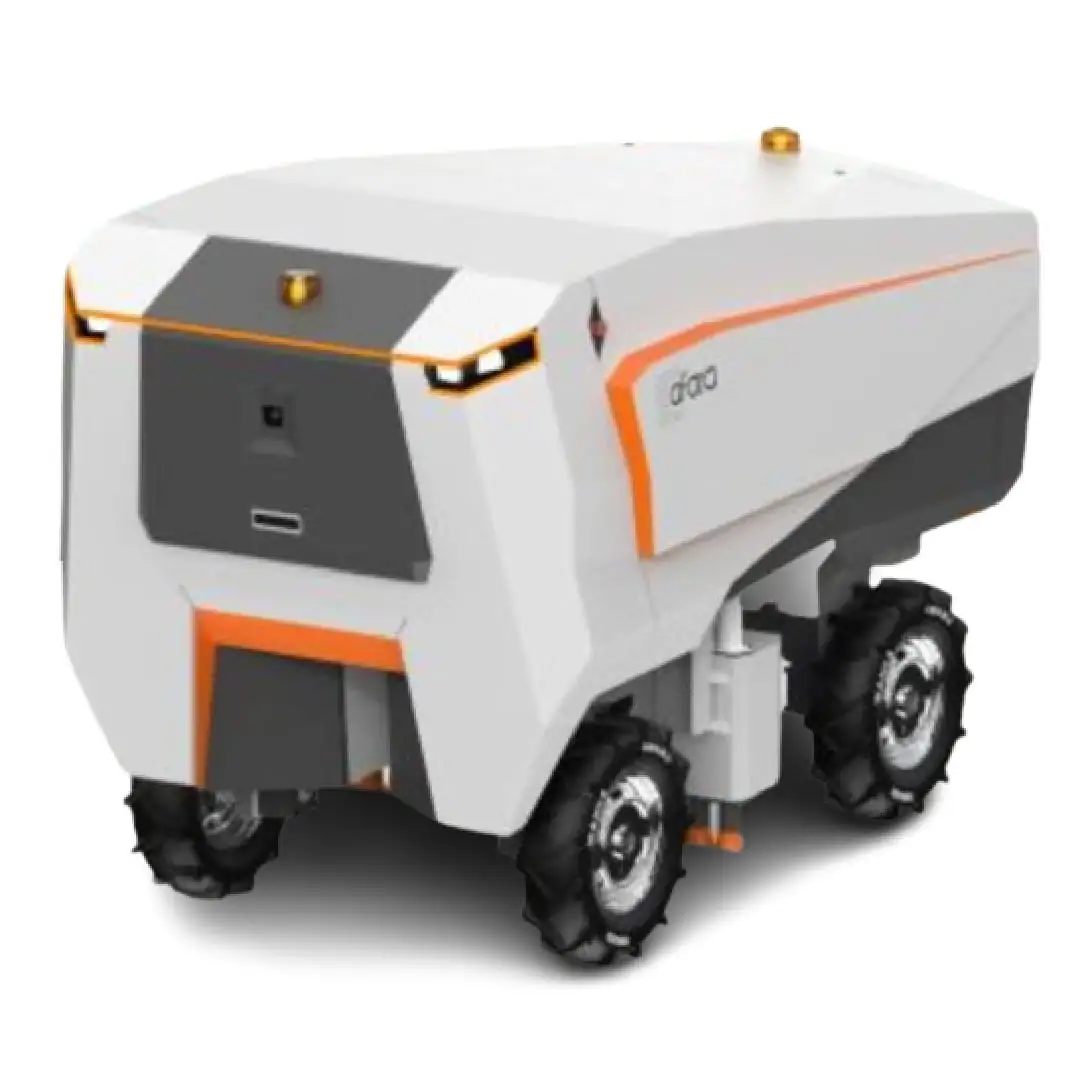The Vermeer Balehawk represents a significant leap forward in agricultural automation, offering an innovative solution for one of the most labor-intensive tasks in hay production: bale handling. Developed by Vermeer’s Forage Innovations team, this autonomous bale mover is engineered to revolutionize post-harvest workflows, dramatically enhancing efficiency and addressing critical labor challenges faced by farmers today.
Leveraging state-of-the-art sensor technology and intelligent design, the Balehawk is poised to transform how hay is managed after harvest. Its core purpose is to autonomously locate, pick up, transport, and drop hay bales, freeing up valuable human resources and optimizing field conditions for subsequent crop regrowth. This product documentation provides a comprehensive overview of its capabilities, technical specifications, and the profound benefits it offers to modern agricultural operations.
Key Features
The Vermeer Balehawk’s standout feature is its fully autonomous navigation system, which utilizes an advanced onboard sensor suite, including a sophisticated Lidar system. This technology enables the Balehawk to precisely locate individual bales within a field, plan the most optimal routes for transport, and execute its tasks entirely without direct human intervention. This level of autonomy not only boosts operational efficiency but also enhances safety by removing humans from potentially hazardous field conditions.
Another critical capability is its high capacity transport system. The Balehawk is engineered to simultaneously transport up to three large round bales, dramatically accelerating the post-harvest workflow and the speed at which fields can be cleared. This capacity directly translates into significant time savings for farmers, allowing for more timely crop management decisions and preparation for the next growing cycle.
Beyond mere transport, the Balehawk incorporates a gentle bale handling system. It employs specialized loading tracks meticulously designed to pick up bales with care, preserving their density and shape. This gentle approach is vital for minimizing oxygen exposure, which is crucial for maintaining the superior quality and preservation of the forage crop. The system is specifically designed to accommodate common 4-foot and 5-foot wide large round bales.
Furthermore, the Balehawk is designed with optimized crop management in mind. By facilitating rapid field clearing, it plays a pivotal role in ensuring the timely regrowth of subsequent crops, which is essential for overall farm productivity and maximizing yields. This efficiency also contributes to a significant reduction in labor requirements, addressing the pressing issue of agricultural labor scarcity by automating a strenuous and time-consuming task.
Technical Specifications
| Specification | Value |
|---|---|
| Navigation Technology | Autonomous with onboard sensor suite, Lidar |
| Bale Capacity | Up to three large round bales simultaneously |
| Bale Compatibility | 4 or 5 foot wide large round bales |
| Bale Handling Method | Gentle loading tracks for density and shape preservation |
| Operation Mode | Fully autonomous bale locating, pickup, movement, and dropping |
| Design Principle | Lightweight to minimize soil compaction |
| Advanced Systems | AI-powered decision making for operational optimization |
| Future Capability | Remote operation and monitoring |
| Recognition | Winner of 2021 Best Field Robot Concept (BFRC) Award |
Use Cases & Applications
The Vermeer Balehawk is poised to revolutionize several critical aspects of hay and forage production. Primarily, it excels in automating the movement of hay bales from fields to designated storage areas or field edges. This eliminates the need for manual labor in this physically demanding task, allowing farmers to reallocate human resources to other critical farm operations.
Another key application is significantly reducing the need for manual labor in bale moving, directly addressing the widespread labor scarcity in agriculture. By taking over this time-consuming activity, the Balehawk enables a more efficient deployment of personnel across the farm.
Furthermore, the Balehawk enhances the timeliness and overall efficiency of the entire haymaking operation. Its ability to clear fields rapidly is essential for the timely regrowth of the next crop, maximizing the productivity of the land. This rapid clearing also contributes to better overall farm productivity and ensures optimal conditions for subsequent plantings or forage cycles.
Finally, its lightweight design plays a crucial role in minimizing soil compaction. By reducing ground pressure during bale transport, the Balehawk contributes to healthier soil, which can lead to improved future yields and more sustainable farming practices.
Strengths & Weaknesses
| Strengths ✅ | Weaknesses ⚠️ |
|---|---|
| Fully autonomous operation using Lidar and advanced sensors for precise navigation. | Currently a concept machine, not available for commercial sale. |
| High capacity transport of up to three large round bales simultaneously, boosting efficiency. | No public pricing information available, potential for high initial investment (inference). |
| Gentle bale handling system preserves bale density, shape, and minimizes oxygen exposure. | Requires specific bale types (large round bales, 4 or 5 ft wide). |
| Significant reduction in labor requirements for bale handling, addressing farm labor shortages. | Requires initial field mapping and programming for autonomous operation. |
| Lightweight design minimizes soil compaction, promoting healthier soil and future yields. | Relies on advanced sensor technology, which may require specialized maintenance. |
| AI-powered decision making optimizes field operations and contributes to smart farming. | |
| Winner of the 2021 Best Field Robot Concept (BFRC) Award. |
Benefits for Farmers
The Vermeer Balehawk offers substantial business value to farmers by directly addressing several critical challenges in modern agriculture. The most immediate benefit is significant time savings. By automating the laborious task of moving hay bales, the Balehawk frees up countless hours that can be reallocated to other essential farm activities, optimizing overall operational efficiency. This automation also translates into substantial cost reduction, primarily through a decreased reliance on manual labor for bale handling, which is a major expense for many operations.
Furthermore, the Balehawk contributes to improved crop management and potential yield enhancement. Its ability to rapidly clear fields ensures that the ground is prepared sooner for subsequent crops, promoting timely regrowth and potentially increasing overall productivity. The gentle handling system helps preserve bale quality, which can lead to better feed for livestock and higher market value for hay.
From a sustainability perspective, the Balehawk’s lightweight design is engineered to minimize soil compaction. This is a critical factor in maintaining soil health, promoting better water infiltration, and supporting long-term agricultural productivity. By reducing compaction, farmers can foster healthier soil ecosystems, leading to more resilient crops and sustainable practices.
Integration & Compatibility
The Vermeer Balehawk is designed to integrate seamlessly into existing hay production workflows, acting as a force multiplier rather than a replacement for current baling operations. It works in conjunction with traditional baling equipment, taking over the post-baling transport phase. Its autonomous nature means it can operate independently within defined field parameters, fitting into the farm’s schedule without requiring constant human oversight.
While specific integration points with other farm management software or machinery are not detailed for this concept machine, its AI-powered decision-making and future remote management capabilities suggest a strong potential for integration into broader smart farming ecosystems. It is envisioned to complement and enhance the overall efficiency of an operation by automating a key logistical task, allowing other systems and human operators to focus on their respective specialties.
Frequently Asked Questions
| Question | Answer |
|---|---|
| How does this product work? | The Vermeer Balehawk autonomously navigates fields using Lidar and an advanced sensor suite to precisely locate hay bales. It then uses specialized loading tracks to gently pick up, transport up to three bales, and drop them in designated areas, all without human intervention, streamlining post-harvest operations. |
| What is the typical ROI? | While specific ROI figures are not publicly available as it is a concept machine, the Balehawk is designed to significantly reduce labor costs associated with hay handling and improve operational efficiency through faster field clearing. This allows farmers to reallocate human resources to other critical tasks and potentially achieve better crop regrowth and overall farm productivity. |
| What setup/installation is required? | Initial setup would involve defining field boundaries and designated drop-off zones within the system’s operational parameters. The Balehawk’s autonomous navigation and AI-powered decision-making capabilities are designed to minimize complex on-site programming after its initial configuration. |
| What maintenance is needed? | As an advanced autonomous robotic system, maintenance would likely involve routine checks of its sophisticated sensors, specialized loading tracks, and other mechanical components. Regular software updates would also be essential to ensure optimal performance and access to new features. |
| Is training required to use this? | While the Balehawk operates autonomously, training would be required for operators to effectively monitor its performance, manage its programmed routes, handle any operational exceptions, and utilize its future remote management capabilities efficiently. |
| What systems does it integrate with? | The Balehawk is designed to integrate seamlessly into existing post-harvest hay production workflows. Its fully autonomous nature means it operates independently for bale movement, complementing traditional baling equipment and other farm machinery. |
| What type of bales can it handle? | The Vermeer Balehawk is specifically engineered to handle large round bales, making it compatible with both 4-foot and 5-foot wide bales, which are common in hay and forage production. |
| Is the Vermeer Balehawk available for purchase? | No, the Vermeer Balehawk is currently a concept machine and is not yet available for commercial sale. It represents a forward-looking innovation in agricultural automation. |
Pricing & Availability
The Vermeer Balehawk is currently a concept machine and is not available for commercial sale. As such, no public pricing information is available. This innovative technology represents a vision for the future of haymaking automation. For inquiries regarding future availability or to learn more about Vermeer’s forage innovations, please contact us via the Make inquiry button on this page.
Support & Training
As a pioneering autonomous agricultural robot, the Vermeer Balehawk would be supported by comprehensive service and technical assistance from Vermeer. This would include expert guidance for initial setup and configuration, ensuring the system operates optimally within a farm’s specific environment. Training programs would likely be provided to equip operators with the necessary skills to monitor the Balehawk’s autonomous operations, manage its advanced features, and effectively utilize its remote management capabilities as they become available. This commitment to support and training ensures that farmers can maximize the benefits of this cutting-edge technology.

